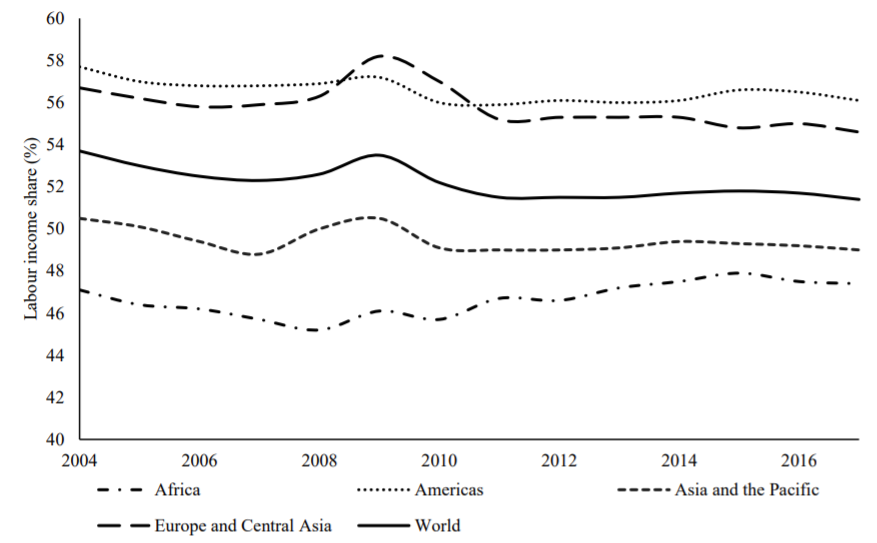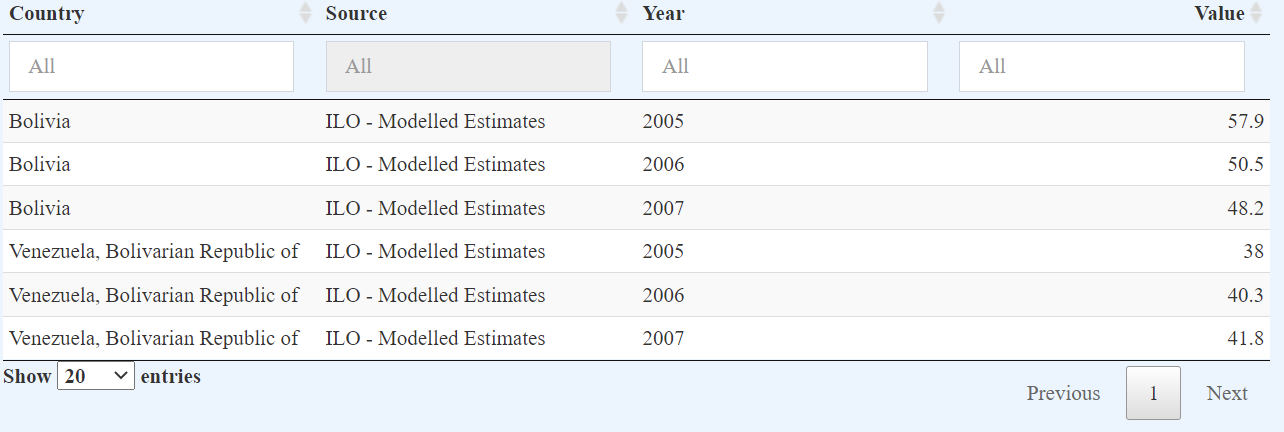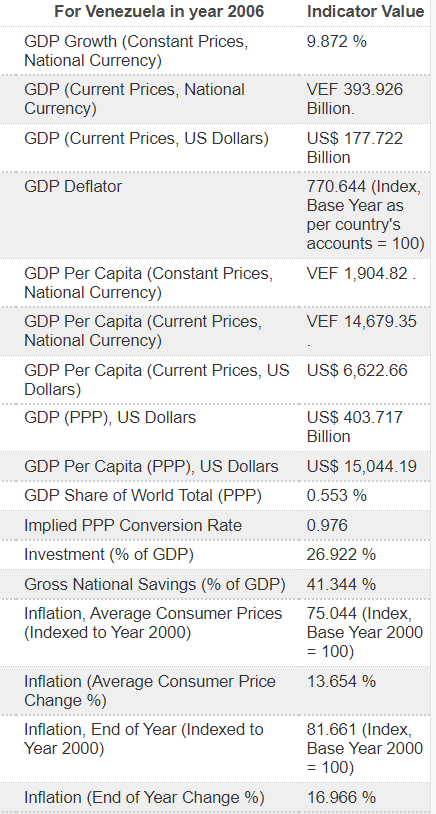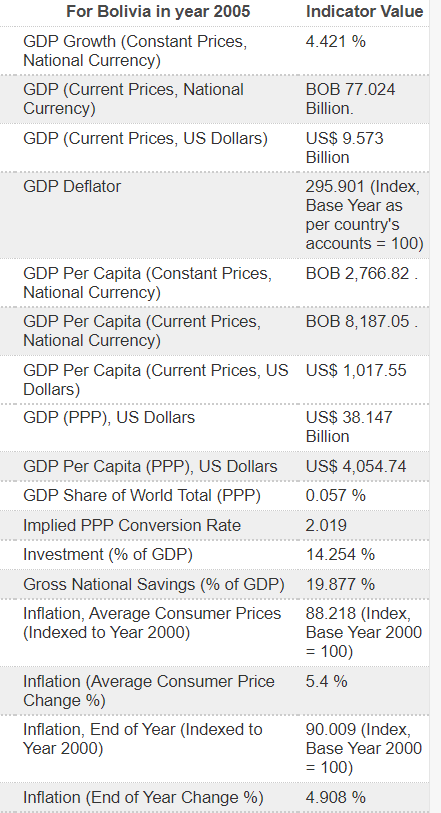Labor Share
Sustainable development is the core principle of the humanistic approach to the environment, social and financial inequities, cultural diversity, and other fundamental areas of prosperity. The United Nations (UN) organization proposes seventeen goals of sustainable development that aim to eliminate poverty, contribute to the ecology and political safety, and reduce the financial inequities among various countries (United Nations, 2021). The current paper emphasizes the sustainable development goal (SDG) 10.4.1, which concerns the labor share of GDP, and attempts to analyze the four case studies in regard to the economic development of the USA, UK, Venezuela, and Bolivia.
Sustainable Development Goal 10.4.1
The primary objective of the SDG 10 is to reduce the overall number of social, economic, and political inequities all over the world. SDG 10.4.1 focuses primarily on the economic aspect and concerns the labor share of GDP (United Nations, 2021). In general, the labor share refers to ‘the total compensation of employees and the labor income of the self-employed given as a percent of GDP, which is a measure of total output (United Nations, 2021, p. 1). In other words, the labor share concerns the wages and social contributions to employees from employers and reflects how much of the raised capital (national or of the partial economic sector) accrues to labor. These statistics are essential to understand the overall distribution of income and might effectively reveal the financial inequities within and among various countries (United Nations, 2021). Therefore, by thoroughly analyzing the labor share of GDP in the said country, it is possible to propose a comprehensive plan for overcoming the economic inequities, which is the primary objective of the sustainable development goal 10.4.1.
Nevertheless, there are some complications that might obstruct the proper calculation of the labor share. For instance, the aforementioned definition of the labor share is generally referred to as unadjusted labor share since it does not take the contribution of the self-employed people into account (Guerriero, 2019). The calculations are further complicated by the taxes on production, imports, and indirect taxes (Guerriero, 2019). Lastly, due to the mentioned challenges and external factors, the labor share of GDP does not necessarily reflect the economic growth of the country (Guerriero, 2019). However, for the sake of the current work and rough estimations, this distinction does not affect the results since most of the presented data online concern the adjusted labor share.
Analysis of the Case Studies
There are several factors that are significant for the analysis of the labor share of GDP. First, the variable should be interpreted in correlation with the economic growth of the country and other factors, such as informal sectors and environmental expenses of production (United Nations, 2021). Secondly, it is essential to use only adjusted labor share values since self-employment people affect countries with low and high national incomes diversely (United Nations, 2021). Ultimately, the calculations of the labor share might slightly differ from the objective situation in the analyzed countries.
The case study concerns the labor share of GDP in the United States (2015), the United Kingdom (2015), Venezuela (2006), and Bolivia (2005). However, it might be informative to analyze the global data first:

As seen from the chart, the labor share values vary significantly depending on the region. As mentioned briefly before, it is complicated to make conclusive statements concerning the economy of the country based on the labor share of GDP; however, in general, the lower the labor share is, the more transparent social and financial inequities are (Gurreiro, 2019). Consequently, the values also represent the state of the economy, and it is expected to see higher ratings in the case studies of the US and the UK. The labor share values for the case studies are demonstrated below.




Discussion
Concerning the North countries, both the United States and the United Kingdom demonstrate high ratings of the labor share during the said years, implying the stable state of the economy in these countries and proving their positions of top ratings in the overall GDP and economic competitiveness. The situation is vastly different with the South countries. Over the years 2005-2007, Venezuela has demonstrated one of the lowest labor shares in the world and experienced similar problems in the economy (Economy Watch, 2010). On the other hand, Bolivia shows considerably high ratings of the labor share during the said period; however, it also demonstrates a declining tendency, which reflects the political instability and continuation of the economic crisis from the 1980s (Economy Watch, 2010). However, Evo Morales, the elected president of Bolivia in 2006, has shifted the course to the mixed economy structure and was able to reduce poverty from 38% in 2006 to 17% in 2016 (BBC, 2019). Summing up, the current paper has discussed the sustainable development goal 10.4.1 concerning the labor share of GPD and analyzed the case studies of the two global North and two global South counties.
References
BBC. (2019). Evo Morales: Bolivian leader’s turbulent presidency. Web.
Economy Watch. (2010). Bolivia economic forecast. Web.
Economy Watch. (2010). Venezuela economic forecast. Web.
Gurreiro, M. (2019). The labor share of income around the world: evidence from a panel dataset. Asian Development Bank Institute, 920, 1-35.
International Labour Office. (2019). The global labour income share and distribution. Web.
International Labour Organization. (n.d.). Statistics on labour income and inequality. Web.
United Nations. (2021). SDG indicators. Web.
United Nations. (2021). SDG indicator metadata: 10.4.1. Web.